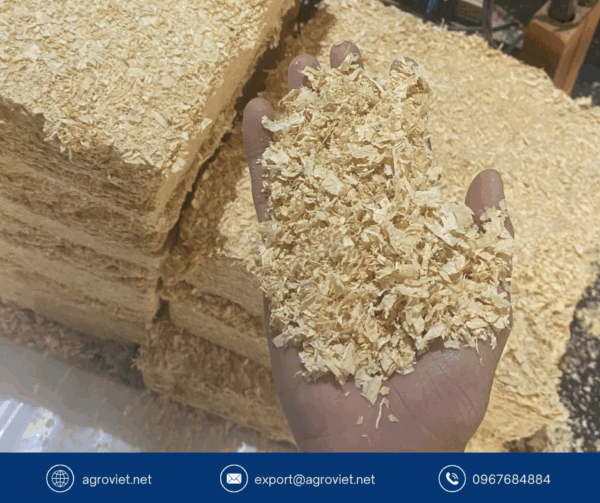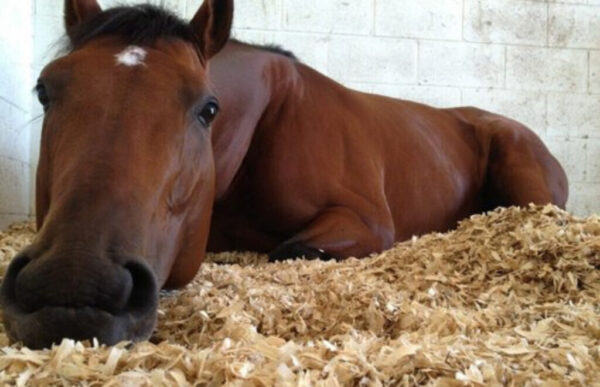Wood shavings (mixed wood shavings) have become a top choice for many livestock farms due to their excellent absorbency, odor control, and eco-friendliness. However, improper use of wood shavings can lead to serious issues, including reduced farming efficiency, increased disease risks for livestock, and wasted operational costs. To help farmers optimize the use of wood shavings, this article highlights 3 common mistakes when using wood shavings along with detailed solutions to ensure livestock farms operate efficiently and sustainably.

Mistake 1: Using unprocessed or contaminated wood shavings
One of the most serious mistakes many farms make is using raw, unprocessed, or contaminated wood shavings. Shavings from woods like pine or tea tree often contain natural essential oils, which, if not properly treated, can irritate the respiratory system or skin of livestock. Additionally, shavings sourced from unreliable sawmills may contain chemical preservatives or sharp wood splinters, reducing absorbency and posing dangers to animals. This not only increases disease risks but also directly impacts the quality of livestock products, causing farmers to lose their competitive edge in the market.
Solution: To avoid this mistake, farmers should prioritize wood shavings from safe wood types, such as rubberwood, eucalyptus, or acacia, which have low essential oil content and are safer for livestock. Shavings must be thoroughly processed before use, for example, by soaking them in a diluted lime solution (1.5 kg of lime per 10 liters of water) for 24-48 hours, then rinsing thoroughly to remove all impurities and residual chemicals. This process ensures the shavings are clean, safe, and non-irritating to animals. Additionally, the moisture content of the shavings should be checked, maintaining around 15% for fresh shavings or 8-14% for dried shavings, to optimize absorbency and prevent mold and bacterial growth. Partnering with reputable wood shaving suppliers with standardized production processes is also crucial to ensuring product quality and long-term farming efficiency.
Mistake 2: Failing to maintain the thickness and hygiene of the wood shaving bedding

Many farms use wood shavings as a bedding material but neglect to maintain the appropriate thickness and regular cleaning. Bedding that is too thin, often less than 10 cm, lacks sufficient absorbency to handle waste, leading to damp conditions in the barn that foster the growth of bacteria like E. coli or Salmonella. Conversely, overly thick bedding that is not replaced or replenished regularly allows waste to accumulate, causing unpleasant odors and increasing the risk of disease transmission. These issues not only affect animal health but also raise waste management and barn cleaning costs, wasting valuable resources.
Solution: To address this mistake, farmers should ensure the wood shaving bedding is spread at an appropriate thickness, ranging from 15-30 cm depending on the type of livestock. For instance, poultry such as chickens or ducks require a bedding layer of about 15-20 cm to ensure good absorbency and comfort, while larger animals like pigs need a thicker layer, around 25-30 cm, to handle higher waste volumes. Combining wood shavings with microbial products like Balasa N01, EM, or other organic-decomposing microorganisms enhances waste breakdown, reduces odors, and maintains a dry and clean barn environment. Every 3-4 weeks, farmers should replace or replenish the shavings and clean the barn by removing old bedding and sanitizing the floor surface. If signs of excessive moisture or unusual odors are detected, immediate action should be taken by adding dry shavings or improving ventilation. Maintaining bedding hygiene not only promotes animal health but also extends the lifespan of the bedding, significantly reducing operational costs.
Mistake 3: Overlooking technology in wood shaving management
In the era of Industry 4.0, relying on manual methods for using wood shavings without integrating modern solutions like IoT systems, ozone machines, or environmental monitoring devices is a significant mistake. Many farms fail to invest in technology, making it challenging to control humidity, temperature, and air quality in the barn. This leads to a polluted farming environment, increasing disease risks and reducing productivity. Additionally, manually produced shavings or those with inconsistent sizes reduce absorbency, wasting materials and increasing costs.
Solution: To optimize the use of wood shavings, farmers should integrate modern technological solutions into barn management. Using IoT systems with sensors to monitor humidity, temperature, and gas levels (such as NH3 or CO2) allows real-time tracking of the barn environment, enabling timely adjustments to maintain ideal conditions for livestock. For example, when sensors indicate humidity levels above 60%, farmers can add dry shavings or enhance ventilation to reduce moisture. Ozone machines are also an effective solution for odor elimination and air and water sterilization, particularly suitable for large-scale farms. Additionally, investing in high-quality wood chippers, such as those from GREEN MECH, ensures the production of uniform shavings (ideally 1-3 mm in size), which are fine and clean, maximizing absorbency and reducing the amount of shavings needed. Farmers can further enhance efficiency by adopting automated systems, such as wood shaving spreaders or microbial mixing machines, to save time and labor. Integrating these technologies not only improves the farming environment but also minimizes disease risks, boosts productivity, and ensures sustainable development.
Benefits of using wood shavings correctly

By avoiding the three mistakes above, using wood shavings correctly offers numerous benefits for livestock farms. First, high-quality wood shavings effectively absorb waste, keeping barns dry, reducing odors, and limiting the growth of harmful bacteria. This creates an ideal living environment, promoting animal health, improving survival rates, and enhancing the quality of products like meat, eggs, or milk. Second, proper use of wood shavings reduces operational costs, from less frequent barn cleaning to optimized waste management. Finally, wood shavings are a recycled material, contributing to reduced wood waste and environmental protection, aligning with modern sustainable farming trends.
Conclusion

Wood shavings (mixed wood shavings) are an excellent solution for modern livestock farming, but only when used correctly. Avoiding the three common mistakes – using unprocessed shavings, neglecting bedding hygiene, and overlooking technological support- will help farmers optimize farming efficiency, reduce costs, and improve product quality. Choose high-quality wood shavings from trusted suppliers like [Company Name] and integrate modern technological solutions to ensure your farm operates sustainably and efficiently.
Contact us today for detailed advice on high-quality wood shavings and advanced farming solutions to help your farm achieve outstanding success!
